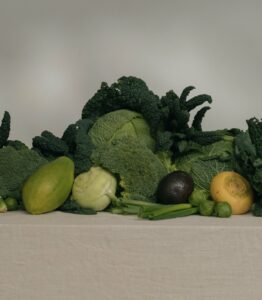
Milk is not only the best known source of calcium, it is also considered to be the most important. Well, it’s a myth – our calcium stores can be replenished just as well with plant-based alternatives.
Calcium: an underestimated all-rounder
Calcium is, in terms of quantity, the most important mineral in our body. About 99 per cent of it is found in our bones and teeth. The last 1 per cent is distributed in our muscle cells and blood.
The role calcium performs in our body is a big one. Not only does it strengthen our bones, but it also prevents decay and periodontitis, regulates the activity of certain enzymes and, as a messenger substance, regulates the transmission of stimuli by nerve cells. First of all, no matter where calcium comes from, it is indispensable for our health.
Milk vs Vegetable
Every day we should consume about 1,000mg of calcium. There is a lot of calcium in cow’s milk, however it’s unlikely that our body absorbs much – because it’s not only the calcium concentration in the food that’s important, it’s also the bioavailability. The figures below describe how quickly and to what extent our bodies can absorb nutrients, depending on physiological factors:
There are about 120mg of calcium in 100ml of milk. But the bioavailability is only 30 per cent. This means that our bodies can absorb only 30 per cent, or 36mg, of the 120mg.
By comparison, 100g of steamed broccoli contains about 87mg of calcium. With a bioavailability of 60 per cent, the broccoli allows the body to absorb an average of 52.2mg – significantly more than milk.
In addition to broccoli, many other plant foods have much better bioavailability than milk. Dark green leafy vegetables are particularly rich in calcium, and have a high bioavailability. Kale, for example, has about 49 per cent, and pak choi about 50 per cent. Nuts, such as almonds, chia seeds, poppy seeds, dried figs and chickpeas are also true calcium miracles. Mineral water is also a wonderful source.
Why dairy products lead to magnesium deficiency
Calcium only has an effect when combined with magnesium. With a calcium-magnesium ratio of 2:1, both nutrients can be absorbed properly by the body. In dairy products, however, the ratio is completely different: in cow’s milk it’s 10:1, and in cheese it’s as high as 30:1. The problem with this, is that when calcium is consumed in too high a dose, it can lead to increased magnesium excretion. The result? Magnesium deficiency, which is far from healthy.
How calcium really reaches your body
In order for the mineral to be optimally processed by our body, vitamin D is also necessary. The sunshine vitamin regulates absorption via the intestinal mucosa, and excretion via the kidneys. In addition, some food and drink contain substances that reduce the absorption of calcium. These include coffee, chocolate, alcohol and sugar. If you follow a high-protein diet, this increases calcium excretion and can quickly lead to a deficiency.
Optimal supply with vegetable calcium
Those who like to drink milk may of course continue to do so. But the notion that milk is the best source of calcium for the human body is a myth. Those who choose to stop consuming milk altogether, can do so with a clear conscience – because our optimal daily requirements can be met easily with plant-based foods. Especially if you pay attention to ways in which absorption can be improved.
Four easy ways to optimize your calcium intake:
01 Fill up on vitamin D
With the help of sunlight, 80 per cent of vitamin D is produced by the body itself. The best time for the formation of the sun vitamin is from March to October from about 10am to 3pm (in the northern hemisphere).
02 Consume several, smaller amounts
When calcium is consumed in several, smaller amounts throughout the day, there is a higher overall absorption than when the entire requirement is consumed at once.
03 Avoid calcium inhibitors
Some food and drink contain substances that reduce the absorption of calcium. These include too much coffee, chocolate, alcohol, sugar, and a high-protein diet.
04 Pay attention to the calcium-magnesium ratio
When eating a diet high in dairy products, magnesium-rich foods should be integrated into the diet. A vegan diet offers an advantage here: plant-based, calcium-rich foods are usually also very high in magnesium.
And add these calcium-rich foods to your shopping list:
Pak choi
Broccoli
Kale
Spinach
Sweet potato
Kernel beans, e.g. white beans
Health Made Simple
My INNER HEALTH Club is your modern day health companion, bringing knowledge and practice into your daily life. Explore holistic solutions and expert advice that empowers you to take an active and preventative role in your health. Learn and practice from anywhere, anytime.




